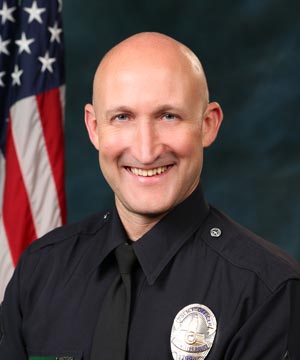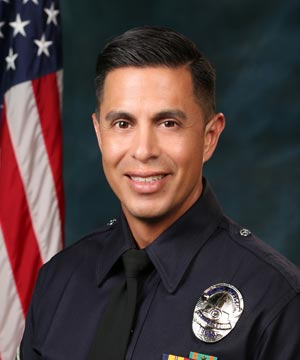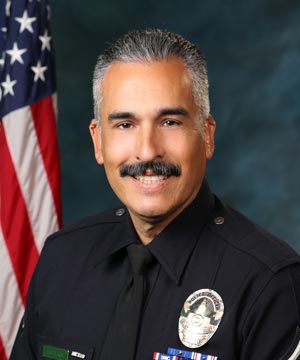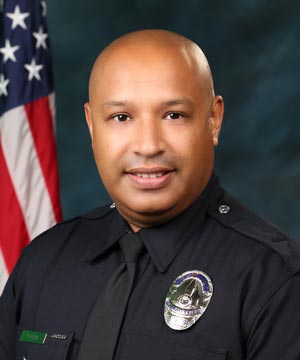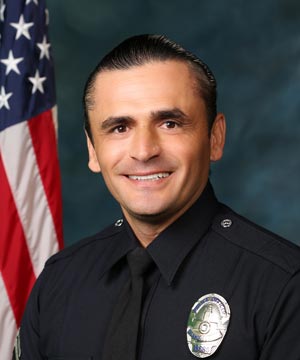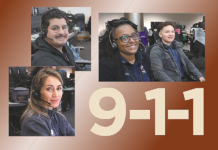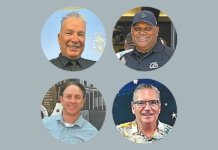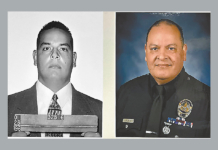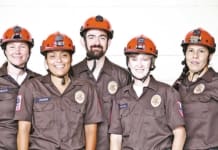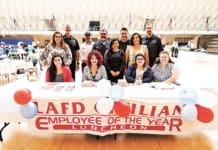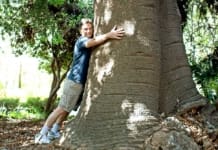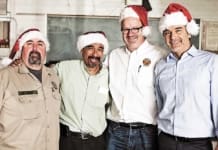Police Dept.’s annual event honors 15 heroes with Purple Heart, Medal of Valor and Preservation of Life honors.
All stories courtesy the Los Angeles Police Foundation.
On Sept. 23, the LAPD hosted its important annual “Above and Beyond” ceremony, which this year honored 15 Officers who demonstrated the highest level of courage and bravery in protecting the City.
The event was held at the Westin Bonaventure Hotel downtown. The event was not held in 2020 due to the pandemic.
This year’s event continued the awarding of Purple Heart, Medals of Valor, and the Preservation of Life. Purple Hearts have been distributed only nine times in the history of the event. This year, seven LAPD Officers were honored with the Purple Heart, nine with the Medal of Honor, and one with the Preservation of Life. (Two Officers were awarded with both the Purple Heart and the Medal of Valor.)
For the fifth time, the LAPD awarded the Preservation of Life medal, a recognition of efforts at de-escalation of public safety situations by avoiding the use of deadly force during dangerous encounters. The Department is one of only a handful in the country to bestow such an honor.
It is Alive!’s great honor to publish every year the names and stories of those honored.
The Purple Heart recognizes Officers who have sustained grievous physical injury during a tactical situation and posthumously to the next of kin of those Officers who did not survive their injuries.
The Medal of Valor is awarded to Officers who distinguish themselves by conspicuous bravery or heroism above and beyond the normal demands of police service. To be awarded the Medal of Valor, an Officer shall have preformed an act displaying extreme courage while consciously facing imminent peril.
The medals are awarded by the Board of Police Commissioners and presented by the Chief of Police in the name of the Department at the annual ceremony. The award consists of a medal, ribbon, and citation. The Medal of Valor was first presented in 1925, and the Purple Heart was first awarded in 2009. The Preservation of Life honor was first awarded in 2016.
The awards ceremony is made possible thanks to the generosity of the Los Angeles Police Foundation. The Club thanks Dana Katz, Executive Director, for her assistance.
 This Year’s Honorees
This Year’s Honorees
Purple Heart
Sgt. Joseph Gunn
Policeman Keith DuPuis
Officer Richard Harsma
Officer Frank Pettinato
Officer Fadi Chelico
Officer Eduardo Guillen
(also Medal of Valor)
Officer Enrique Trujillo
(also Medal of Valor)
Medal of Valor
Officer Clifford Chu
Officer Matthew Clymer
Officer Rene Gonzalez
Officer Martin Higuera
Officer Luis Urbina
Officer Gerardo Velasco
Officer Oscar Granillo
Officer Eduardo Guillen
(also Purple Heart)
Officer Enrique Trujillo
(also Purple Heart)
Preservation of Life
Sgt. Michael Porter

The stories of their bravery follow.
 Purple Heart
Purple Heart
Altercation and Pursuit
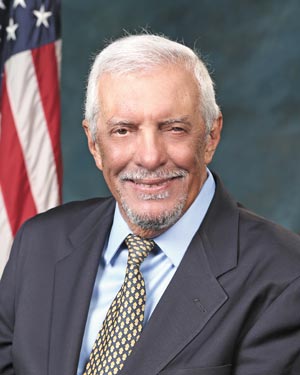
In the early morning hours of Aug. 17, 1966, Sgt. Joseph Gunn was on uniformed patrol in Newton Division when he observed a suspect armed with a knife and a crescent wrench chasing another male. Gunn detained both men and ordered the suspect to drop the knife and wrench, which he did. As Gunn began to search the suspect, the suspect spun around and punched Gunn in the face. A physical altercation ensued; the suspect broke free and ran. Gunn engaged in a pursuit.
The suspect entered the passenger side of a truck he had just stolen in an armed robbery, and Gunn entered the driver’s side. The suspect grabbed a shotgun he had in the truck and pointed it at Gunn, who drew his service revolver and fired one shot, missing him. The suspect then fired one shotgun blast, which struck Gunn in the lower torso, injuring both legs and his hip area. Gunn fired an additional round before the suspect exited the vehicle and fled on foot. Although seriously wounded, Gunn pursued the suspect; however, due to his wounds, he lost his balance and fell to the ground.
Seeing the Officer on the ground, the suspect returned and pointed the shotgun at him. While lying on the ground, Gunn fired a third shot at the suspect before pulling himself up to return to his police vehicle to radio for help. The suspect, who sustained a gunshot wound to his wrist, was apprehended by responding Officers.
Gunn had 37 shotgun pellets in his legs. Two of the pellets were extracted at the hospital, and the rest remain in the legs having attached themselves to bone and muscle. He was hospitalized for one week following the shooting and returned to work after one month.
Gunn rose through the ranks, becoming the youngest Commander in LAPD history at the time. He retired from the Department in 1979 after 20 years of service. In 1995, he was selected by Mayor Richard Riordan to become an Assistant Deputy Mayor in charge of law enforcement policy and became the Executive Director of the Police Commission in 1998 before retiring in 2003. He continues to serve in law enforcement as a Police Commissioner for the City of Burbank.
Erratic Driving
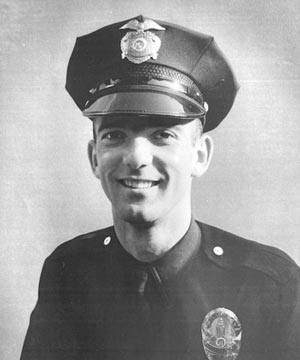
At approximately 4 a.m. Oct. 16, 1966, Wilshire Division Policeman Keith DePuis and his partner stopped a motorist for driving erratically and ordered the driver and passenger out of the vehicle. The passenger started walking back toward the Officers, who asked him to raise his hands, which he did. Suddenly, he reached toward his back, grabbed a gun that he had holstered, pointed it at both Officers and shouted, “Don’t move!” DuPuis immediately pulled his gun, and the two men fired at each other almost simultaneously.
DuPuis hit the gunman in the left shoulder. The gunman’s shot hit DuPuis in the mouth, and the bullet lodged in the back of his neck. Although he assumed that his partner was already dead, the other Officer quickly radioed for assistance and an ambulance.
Upon arriving at Central Receiving Hospital, an attendant detected a faint pulse, performed an emergency tracheotomy and started external heart massage. Doctors determined that the bullet had damaged the spinal cord and paralyzed him from the neck down. DuPuis regained consciousness and recognized his wife, although he still needed a respirator for breathing.
A few days after the shooting, he underwent more than two hours of surgery to remove the bullet in his neck. He succumbed to his injuries on Oct. 27, 1966, 11 days after the shooting. Policeman DuPuis left behind a wife and three young children between the ages of two and six.
It was later discovered that both suspects were ex-convicts from Ohio who were on a cross-country crime spree – robbing stores and stealing cars in Ohio, Nebraska, Texas and California. Both suspects were convicted of first-degree murder on March 17, 1967.
Barricaded Suspect
|
|
On Feb. 9, 1968, Officer Richard Harsma, with two years in the field, and Officer Frank Pettinato, with five months in the field, responded to an “Officer Needs Help/Officer Down” call in what was then known as University Division. (This Division later became Southwest Division, and the actual location of this incident was eventually redistricted to 77th Division.)
Nearby, a suspect shot at an Officer, barricaded himself in an apartment, and was still actively shooting out the front window where the wounded Officer lie on the ground. After hearing from fellow Officers which apartment the suspect was in, Harsma, carrying his service revolver, made his way to the opening of the building. Pettinato did a military crawl to the opening of the building while cradling a shotgun. As both Officers made their way down the hallway toward the suspect’s apartment, they observed the back of the suspect through the open door of the apartment. While advancing to the door, the suspect became alerted to the Officers’ presence. The gunman turned and opened fire at the Officers, hitting both with shotgun pellets. Due to their injuries, both officers were unable to return fire and made a tactical retreat to safety.
Officer Richard Harsma was shot in the chest, upper arm and left hand. He underwent two surgeries to remove most of the pellets, but to this day carries some in his hand. He returned to work after three months and went on to serve 30 years with the Department.
Officer Frank Pettinato underwent surgery but still carries most of the 44 pellets. He returned to duty after six months and has 50 years of combined service as an Officer and as a Reserve Officer.
Traffic Collision
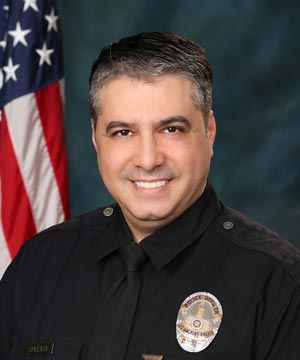
On the evening of Dec. 11, 2017, West Los Angeles Officer Fadi Chelico and his partner initiated a traffic stop for a vehicle speeding on the 405 Freeway north of the Santa Monica Boulevard exit. Chelico spoke with the driver and decided to let him off with a warning. As Chelico walked between the violator’s vehicle and his police vehicle, a third vehicle struck the rear of the police vehicle, forcing it forward to the rear bumper of the traffic violator’s vehicle. Chelico’s leg was partially severed from the impact, causing him to fall into oncoming traffic.
Chelico’s partner immediately broadcast an “Officer Needs Help” call. California Highway Patrol Officers were the first to arrive on scene and placed a tourniquet on Chelico’s upper thigh to stop the blood loss from the severed leg. LAPD Officers soon arrived and quickly saw that the first tourniquet had not stopped the bleeding, so they applied a second tourniquet. Chelico was in and out of consciousness, so another CHP Officer used an Oxygen Bag Valve Mask to help with his breathing. He was taken to the UCLA Westwood Medical Center where he received lifesaving surgery. The driver of the vehicle that struck Chelico was arrested on suspicion of DUI.
Officer Chelico’s leg had to be amputated above the knee. He has had numerous surgeries and is still unable to return to work.
 Purple Heart and
Purple Heart and
Medal of Valor
Stolen Truck
|
|
On the morning of April 9, 2018, a Topanga Division Officer observed a pickup truck sitting in a Home Depot parking lot. The Officer ran the plate and learned it was stolen. Sensing the Officer’s interest, the driver pulled away. The Officer put out a call to intercept the stolen truck, and Topanga Division Officers Oscar Granillo and Eduardo Guillen responded. Guillen pursued the car through several blocks as Granillo radioed their position. Unbeknownst to the Officers, the suspect abandoned the stolen truck in an alley and hid. Several units continued to pursue the truck until Officers realized it was unoccupied.
Granillo and Guillen speculated that the suspect was still in the alley, so they quickly turned their car around and entered the alley. The suspect jumped from his hiding place and ran. Granillo radioed their position, and the Officers exited their vehicle to chase the suspect, ordering him to stop. The Officers continued to call to the suspect, communicate with each other and with the LAPD airship overhead, which let the Officers know that the suspect reached into a satchel slung over his shoulder.
Suddenly, the suspect stopped, turned and raised a revolver to the face of Granillo, who was only a few feet away. Granillo threw himself to the ground while simultaneously drawing his weapon. In that split second, the suspect fired at Granillo. The suspect must have thought he hit him because his next round was aimed at Guillen. The second shot hit Guillen’s knee and knocked him to the ground.
Despite his wound, Guillen returned fire at the suspect, who fired several more rounds at the Officers. When Granillo hit the ground to avoid being shot, his gun arm hit first, causing the gun to malfunction. Despite the pain to his arm and the stress of the moment, Granillo cleared his gun’s malfunction and returned fire. The suspect, having been shot multiple times, fell to the ground, and was taken into custody. The suspect was a wanted parolee who was tied to several recent armed robberies in the West San Fernando Valley.
Guillen was taken by ambulance to the hospital and treated for a through-and-through gunshot wound to his knee. He returned to work after 26 days.
Suspect at Outdoor Party
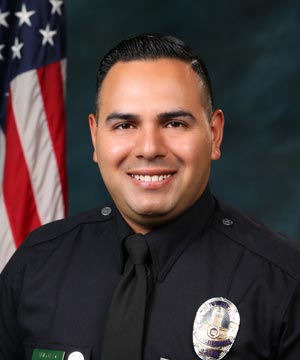
On the evening of April 20, 2019, Newton Area Gang Enforcement Detail Officer Enrique Trujillo and his partner were patrolling the Pueblo del Rio Public Housing Development when the Officers observed a vehicle drive slowly, turn a corner, and accelerate to a high rate of speed. The Officers followed the vehicle around the corner, where the vehicle suddenly came to a stop. The male driver exited the vehicle and briefly faced the Officers. Trujillo’s partner observed a bulge in the driver’s front waistband and saw a portion of a handgun grip. The suspect turned away from the Officers and ran into the housing development.
Without hesitation, the Officers engaged in a foot pursuit as the suspect ran toward a large outdoor party. Suddenly, a man stepped out from the crowded party and ran directly into the path of both Officers. He drew a handgun, turned toward Trujillo and fired four rounds, striking Trujillo in the shoulder and pelvis. Displaying extraordinary courage and will, Trujillo absorbed the violent attack, drew his service weapon and returned fire. Trujillo and the suspect exchanged gunfire from a decreasing distance from approximately 15 to two feet. The suspect was struck in the chest and abdomen, causing him to fall to the ground.
Trujillo’s partner heard the shots and immediately turned his attention away from the male suspect who had fled from the vehicle. The housing development crowd began to encroach on the scene. Realizing that his partner was shot, the Officer broadcast for help and single-handedly controlled the agitated and advancing crowd. Uniformed resources poured into the area.
The first Officers who arrived noticed that the wound near Trujillo’s groin was critical and that a tourniquet was needed to stem the flow of blood. One Officer used his Department-issued Hobble Restraint Device around Trujillo’s leg. Another Officer decided that they needed to extract Trujillo from the “hot zone” because the crowd was growing and becoming increasingly aggressive toward them.
Two Officers then carried Trujillo toward waiting police vehicles. Trujillo was bleeding, his skin tone was gray, and the ambulance was delayed. The decision was made to take Trujillo in the rear of the police vehicle to the hospital where a trauma team was waiting to receive him.
Officer Trujillo was rushed into surgery. He received 30 sutures to close the gunshot wounds and returned to work after 10 months of recuperation.
 Medal of Valor and Preservation of Life
Medal of Valor and Preservation of Life
Parolee Check
|
|
|
|
|
|
|
On June 15, 2017, Metropolitan Division (Metro) Officers were assigned uniformed crime suppression in Newton Area. Metro Officers met with Newton Area Gang Enforcement Detail (GED) to gather intelligence on problem areas and were advised that they had conducted probation/parole checks focusing on Playboy criminal street gang members earlier that day and had attempted to locate a female parolee.
They learned that the female parolee was living with her boyfriend, a documented Playboy gang member known to possess handguns. Officer Matthew Clymer and his partner went to the boyfriend’s residence and initiated a pedestrian stop on someone seen leaving the home. The want-and-warrant check revealed the person was on active probation with search conditions. A Metro Lieutenant arrived on scene and contacted Newton GED to see if any other gang members were connected to the address. He learned there was another person on active probation for weapons-related charges associated with it and decided to conduct a probation compliance search.
Officers Martin Higuera, Luis Urbina, Gerardo Velasco and several others responded to assist. Clymer and Urbina positioned themselves in front of the house, and Higuera and Velasco deployed to the rear. The Officers announced their purpose and lawful authority and requested that all occupants exit the residence. While Officers detained two individuals on the front porch, Clymer and Urbina held cover on the front door. Suddenly, a male appeared in the hallway, began walking towards the front door, and, without any warning, revealed a large-caliber revolver and began firing indiscriminately in the Officers’ direction.
Fearing for their lives and the lives of the other Officers, Clymer and Urbina returned fire to stop the suspect’s deadly actions. The Officers’ quick response caused the armed suspect to move to the rear of the residence. Higuera and Velasco had heard the gunfire and saw the suspect climb out of a rear window while still holding his gun. The suspect began shooting again and fired in the Officers’ direction. Fearing for their lives, the Officers returned fire while maintaining a visual on him as he escaped over a fence into the surrounding neighborhood.
The SWAT team heard an “Officer Needs Help” broadcast, along with information that a suspect was actively firing on uniformed Officers with what was believed to be a rifle. SWAT and K-9 personnel immediately responded to the scene and quickly formulated a plan to search for the violent suspect. With assistance from Air Support Division and information from a neighbor who heard the gunfire, the team focused their efforts on a large trash Dumpster nearby.
K-9 Officer Clifford Chu deployed K-9 Aro to search the rear yard. As soon as K-9 Aro entered the yard, the suspect fired at the dog. Chu attempted to recall K-9 Aro, but he did not immediately return. (Officers later learned that Aro had been struck by gunfire.) The suspect fired several more shots, which forced the team to seek cover at a nearby armored vehicle.
Due to the large trees, shrubbery and ensuing darkness, the airship was unable to pinpoint the location of the suspect. There was a strong but unconfirmed belief that he was in a particular residence. Before initiating a search, Officers learned that there were innocent, non-involved citizens in the residence and small children in a structure to the rear of the residence. Evacuating them became top priority.
SWAT Sgt. Michael Porter, along with SWAT Officer Rene Gonzalez, Chu and others formulated a tactical plan to systemically clear the residence. As K-9 Aro searched the open rear areas, an armored vehicle was positioned to provide cover to other personnel. A detached laundry room posed a concern and needed to be cleared prior to evacuating the trapped family in the rear structure. The door to the laundry room was locked from the inside, so Gonzalez repositioned himself near a window. While attempting to cover the window, a loud gunshot rang out from within that impacted the front of Gonzalez’s ballistic helmet, knocking him backwards to the ground. Despite significant risk to his own safety, Chu immediately rushed to Gonzalez’s aid, grabbed him and brought him to safety as shots from the laundry room rang out.
After it was confirmed that Gonzalez was uninjured, he joined his fellow teammates in the front of an armed vehicle, as the suspect still posed a threat. Porter and his team positioned themselves to the rear to minimize the chance of the suspect escaping into the neighborhood. The suspect continued shooting at the Officers, nearly missing them but striking the armored vehicles, as Officers returned fire.
The suspect suddenly stopped firing, which offered a window of opportunity for Porter to implore him to exit unarmed and surrender. Porter provided calm, clear and direct commands to the suspect while ensuring that each member of his maintained composure and discipline. The efforts paid off when the suspect unexpectedly stated he wanted to surrender. However, he failed to follow repeated commands, forcing another Officer to deploy a single beanbag round that struck him in the torso. Porter, again, continuously and calmly ordered the suspect to surrender, which he eventually did without another shot being fired or additional force being required.
The ensuing investigation revealed the suspect was armed with a six-shot, .44 caliber magnum revolver that he reloaded at least twice.
The suspect was later convicted on a number of charges and received a prison term of 553 years and eight months to life.




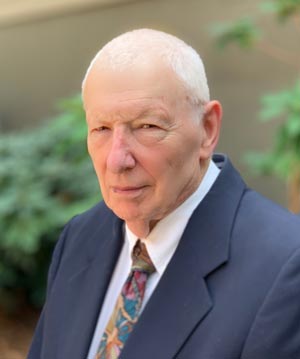
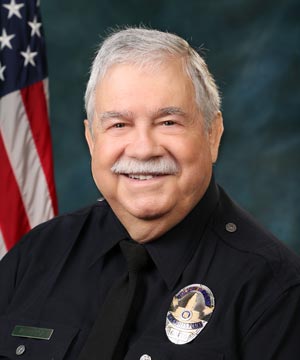
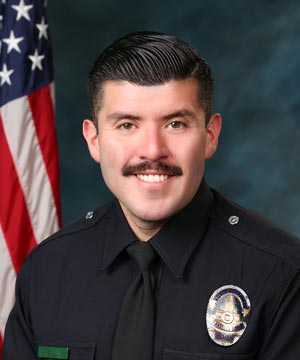
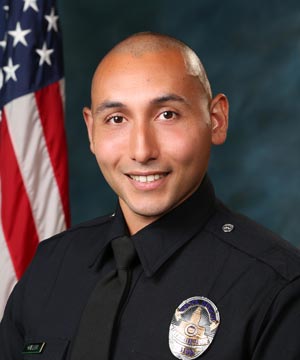
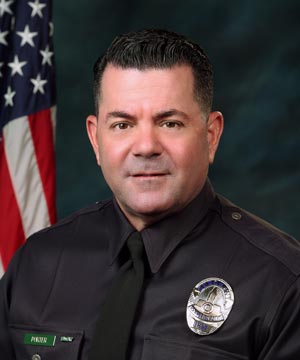
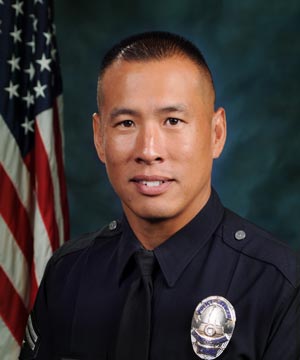 Officer Clifford Chu
Officer Clifford Chu